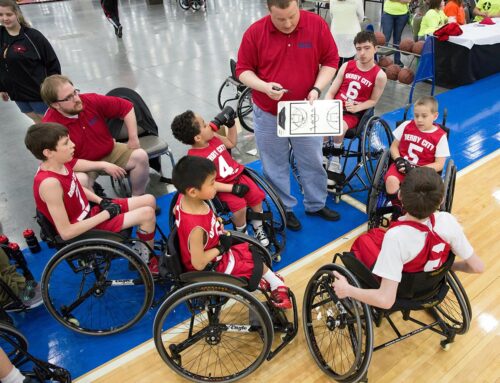Intoeing

“Why does my child walk funny?” In-toeing and out-toeing are two visible musculoskeletal conditions in children that are often a cause for concern to parents, family members, and teachers. While the concern is always well meaning, these conditions are usually part of the spectrum of typical musculoskeletal development. In almost all cases, interventions such as orthotic shoes, casting, and bracing are unnecessary because the child’s position would have corrected spontaneously as they developed and these conditions rarely persist into adolescence.
The causes of in-toeing vary. Here are some of the key physical characteristics physical therapists will assess before developing a plan of care for a child with one of these conditions.
- Femoral anteversion is defined as when the head of the femur (the part that forms the joint with the hip acetabulum) is anterior to the frontal plane. In other words, when the head of the femur is “rotated” such that the shaft of the femur points inward. Many types of interventions have been used in an attempt to correct femoral anteversion (braces, twister cables, shoe modifications, orthotic devices) but none have proven to be effective. Children who have femoral anteversion will also tend to favor W-siting position. Most cases of excessive femoral anteversion resolve by 8 years old, but if significant anteversion still presents at age 10 to 14, discussing the cost-benefit ratio of elective surgery with a pediatric orthopedic surgeon may be worthwhile.
- Tibial torsion is the degree of rotation of the tibia (shin bone) relative to the knee or ankle. When it presents as internal tibial torsion (ITT), this can also result in in-toeing. Two schools of thought exist in whether to intervene. On one hand, many orthopedists believe ITT does not warrant intervention because only a very small percentage of children do not improve as they age, and those with severe deficits can receive surgery. Another school of thought advocates intervention with splints or other devices to correct the rotation of the bone over time, starting at a young age. If you wish to learn more, speak with an pediatric orthopedist for more information about which approach may be best for your child.
- Metatarsus adductus (MTA) presents as shifted bones of the forefoot, resulting in feet that point together at the big toe. It is one of the most commonly seen positional conditions in infants, occurring in 1 per 1000 live births. MTA also usually corrects spontaneously and intervention is rarely required for mild cases. Moderate cases may benefit from stretching exercises and corrective shoes. For severe cases, surgery may be important in preventing further problems as the child becomes an adult, as they carry an increased risk of stress fractures. Speak to a physical therapist or orthopedist to learn more about what course of action to take.
This blog provides general information and discussion about medicine, health and related subjects. The words and other content provided in this blog, and in any linked materials, are not intended and should not be construed as medical advice. If the reader or any other person has a medical concern, he or she should consult with an appropriately-licensed physician or other health care worker.
Never disregard professional medical advice or delay in seeking it because of something you have read on this blog or in any linked materials.

Eyas Landing is a therapy clinic with a mission to provide evidence-based and family-centered therapy services for children, adolescents, and their families. The primary goal is to deliver relationship-based interventions within the most natural environments and to empower families to reach their full potential. To achieve this goal, our highly educated, compassionate staff dedicates time and expertise to create experiences that maximize therapeutic outcomes. The strength, determination, and perseverance of our clients are evident as they succeed in therapy, and ultimately in their daily lives.
Eyas Landing offers a wide range of comprehensive services including Speech Therapy, Occupational Therapy, Physical Therapy, ABA Therapy, Social Work, Family Therapy, and Neuropsych testing. Services are provided throughout the Chicagoland area via Telehealth, In-Home, and in our state of the art clinic.
Want to learn more or you have a specific question? Feel free to connect with us here!



